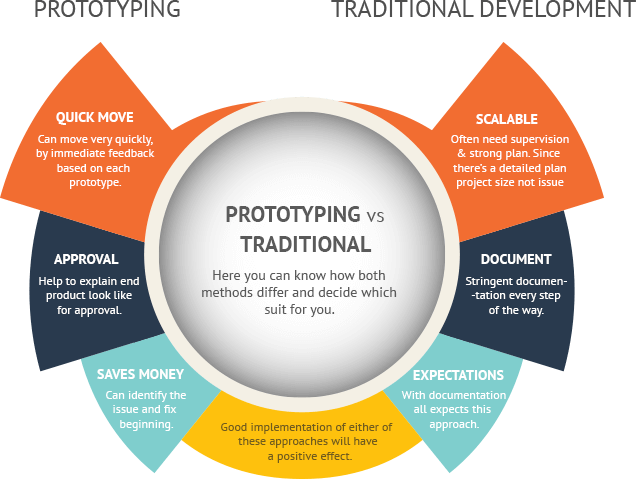Both prototyping and traditional development have pros and cons. It’s important to have a firm grasp of the difference and benefits of each before you make your decision.
Prototyping
Prototyping involves designers and developers building models of your product. These can range from a pencil-and-paper drawing to an interactive wireframe.
Here’s the difference between both approaches :

Projects move quickly
With prototyping, the idea is to see if a product will be viable. Once this is determined, each subsequent prototype will be used to gain feedback. This process can move very quickly which saves time, particularly if you and your teams can provide immediate feedback based on each prototype.
Pros
Easier to gain investor or shareholder approval
Humans are visual creatures. It can be difficult to explain a concept to shareholders and investors without pages of written information. Prototypes allow you to quickly get buy-in since decision-makers can see what the end product will look like and how it will be used.
Businesses save money
Prototyping allows you to see where you may have problems with your design during the beginning stages. You can also determine which features are necessary, and adjust accordingly.
It’s much more cost-effective to use prototypes to fix issues as they arise than to wait until development is underway.
Cons
Prototypes are representations
You may find that your team members or stakeholders are surprised at the end when the product doesn’t look or act exactly like the prototype. It’s important to keep in mind that prototypes are about getting as close as possible with limited functionality to get an idea across. They’re representations- not the real thing.
Requires feedback
While this is great news for the finished result, prototyping requires you to be responsive and provide constant feedback. After each prototype, you’ll need to explain what’s working and what’s not.
Traditional Development
With traditional development, project requirements are clearly defined at the beginning of the process. And frequent changes are not common or expected.
This is a rational approach. It assumes that processes can be optimised, problems can be well-defined, and results can be well predicted. It also involves extensive up-front planning so that variations in the development life cycle can be measured and controlled.
Pros
Easily scalable
One of the big advantages of traditional development? Scalability. Mission critical and large projects often need close supervision and a strong plan. Since there is a detailed plan for the end project before any development starts, project size is not an issue.
Plenty of documentation
Traditional development provides stringent documentation every step of the way. Each step is reviewed throughout the process.
Meets expectations
Traditional development is exactly that: Traditional. Since this is still one of the most widely used processes, you may find that stakeholders and more traditionally-inclined team members expect to see a traditional approach- with the documentation that comes with it.
Cons
Can lead to budget blowout
This is a key issue with traditional development. With prototyping, potential problems are identified early on and swiftly dealt with. Unfortunately, many problems are only found in the latter stages of traditional development. And this can be hugely expensive for a long run duration.
Little flexibility
It’s nice to imagine that you’ll have all of your project specifications and goals set in stone before development begins. But this is unlikely. Unfortunately, it’s much more development time-consuming and expensive to make changes mid-way through the process with traditional development.
Less customer involvement
With prototyping, you’re constantly in the loop and can suggest improvements while reviewing each prototype. This makes it easy to make changes and increases the chances that you’ll be very happy with the end product.
Traditional development doesn’t have the same level of customer involvement, which can lead to issues once the project is delivered if the development firm has not placed an emphasis on communication.
Prototyping or Traditional development?
For many businesses, prototyping will give the best results due to early feedback and the ability to find problems at the beginning stages of the process. However, there is also a time and a place for traditional development as well.
The bottom line? Bad implementation of either of these approaches will have a negative effect on user experience, while good implementation will have a positive effect. This is where the old saying “A poor craftsman blames his tools” becomes appropriate.
Software development companies can use any tool or technique poorly or effectively. Your choice will depend on the goals and constraints of your project, along with your budget, deadlines, and stakeholders.
Want to learn more about how the development process would work for your project? Get in touch today.



